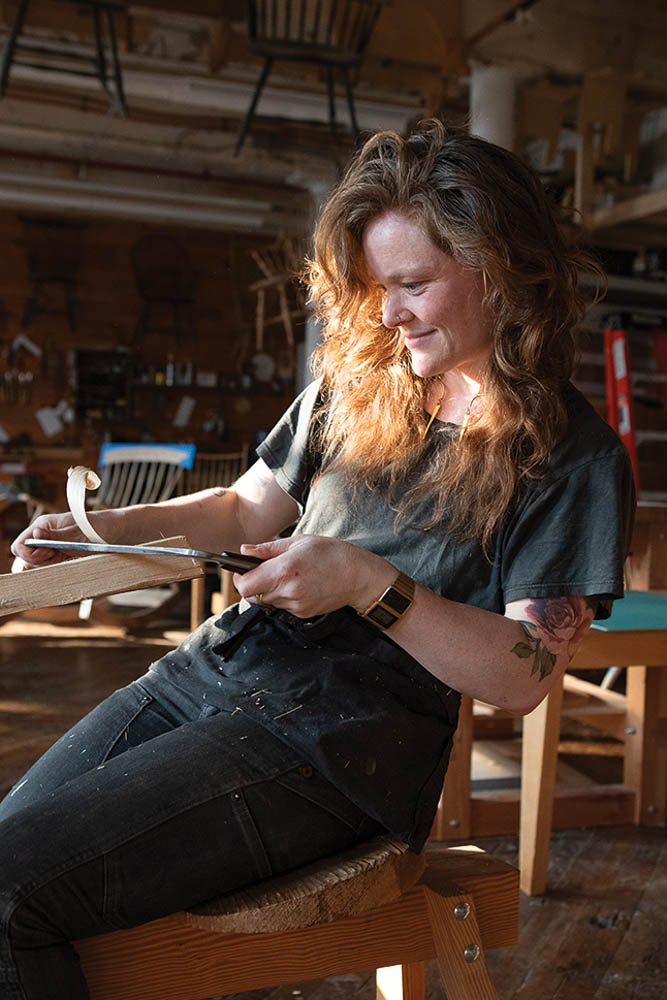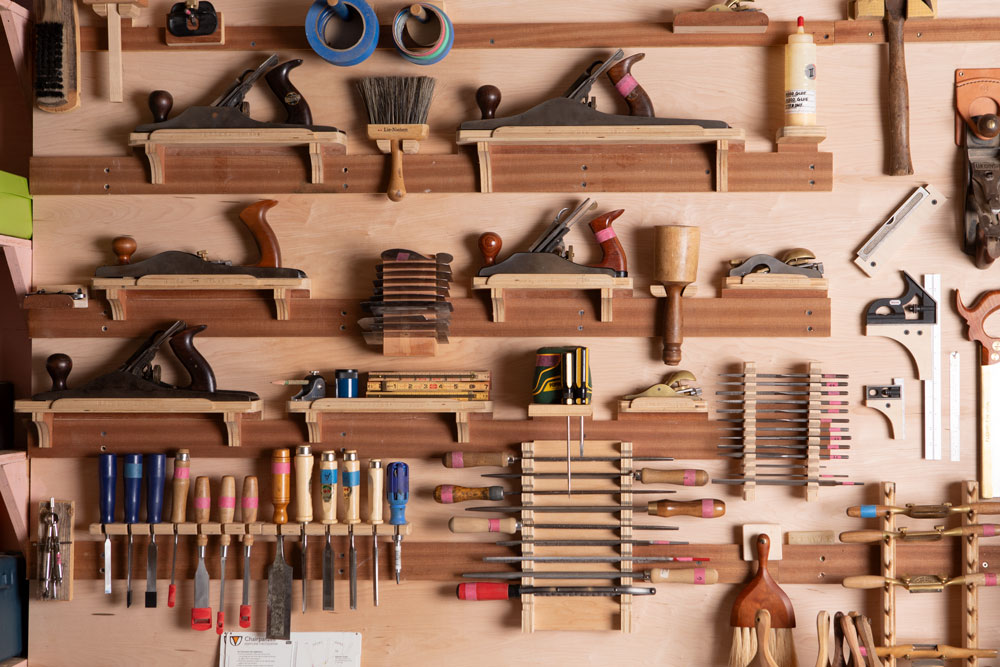By Adrienne Perron
Photos by Aliza Eliazarov
From our September 2023 issue
Aspen Golann wasn’t always interested in woodworking, but she took to it fast. Six years ago, after spending the previous six years as a high-school art and English teacher, she felt an urge to find her dream job. So she decided to get out of the classroom and work with her hands. At Boston’s North Bennet Street School, a vocational school, she found her joy in the furniture-making program. “I thought, ‘This is a place where I can never hit my ceiling,’” she says. “I loved knowing that I would never learn everything they have to teach me.”
Golann, who’s 36, moved to Berwick last year and now works full-time with wood. No project is too big or small, from dressers and cabinets to brooms and spoons. Her favorite undertaking, though, is Windsor chairs. In May, she won a $100,000 grant from the California-based Maxwell/Hanrahan Foundation, an organization that awards five artists across the country each year for their commitment and contribution to their craft. The award took Golann by surprise — she still doesn’t know who nominated her.



When she’s not making chairs, Aspen Golann also writes and sells instructional woodworking zines — self-published, miniature magazines — to fundraise for the nonprofit school she founded.
She plans to use much of the award to support the Chairmaker’s Toolbox, a nonprofit she founded in 2020 that aims to preserve traditional woodworking techniques and offer resources and classes to communities of historically underrepresented craftspeople. The organization hosts free classes across the country, works with skilled toolmakers to make and sell a line of classic chair-making tools, and distributes donated tools — froes, adzes, scorps, and more — through its Living Tools program.
The grant, Golann says, will help to give more scholarships to aspiring makers and to hire more accomplished craftspeople to teach classes. And expanding the roster of teachers, she says, will help her focus more on growing her own woodworking knowledge and practicing new skills. “More than anything, this money is time for me,” she says. “It means more time for targeted learning. I want to learn from badass people who know what I want to know.”
Tell Us More
Aspen Golann
Why chairs?

No piece of furniture has a more intimate connection to the body than a chair — you can reverse engineer the human body by looking at one. You can see the way the body engages with the world when you look at the way a chair is made. People will be like, what’s the perfect chair? And I’m like, are you eating soup in it? Studying? Rocking a baby? Different chairs are different tools.
You studied sculpting in college. What was the transition from sculpture to furniture like?
I tried to be a sculptor for years, but it never took because it felt too open-ended. I love the combination of limitation and freedom that comes with making furniture. I play more bravely in a fenced yard. There are problems to solve and rules to break — something to push back against.
How did you come up with the idea for the Living Tools facet of your nonprofit?
When I was working for my chair-making mentor, Peter Galbert, I made a list of every tool I needed to own to make Windsor chairs. If I bought every tool new, it would cost $8,000. Someone who was retiring from chair making gave me a box of tools they wouldn’t be using anymore for free, and it changed my life.

How has your style evolved since you started woodworking?
The work I’ve made since is more sculptural and strange, and I apply hyper-masculine and fancy techniques to common domestic objects. That’s because, while at school, I started thinking about the social and political contexts of 17th- to 19th-century American furniture styles I was learning to make. Furniture plays stereotypical female domestic roles — seen and not heard, invisible labor. So I thought, “How can I leverage these skills to make whatever I want instead?” You can teach me a skill, but you can’t tell me what to do with it.
Golann sells her work online and accepts commissions. Smaller pieces, from spoons to brooms, sell for around $250–$700, and the price of furniture typically tops out at $20,000.


